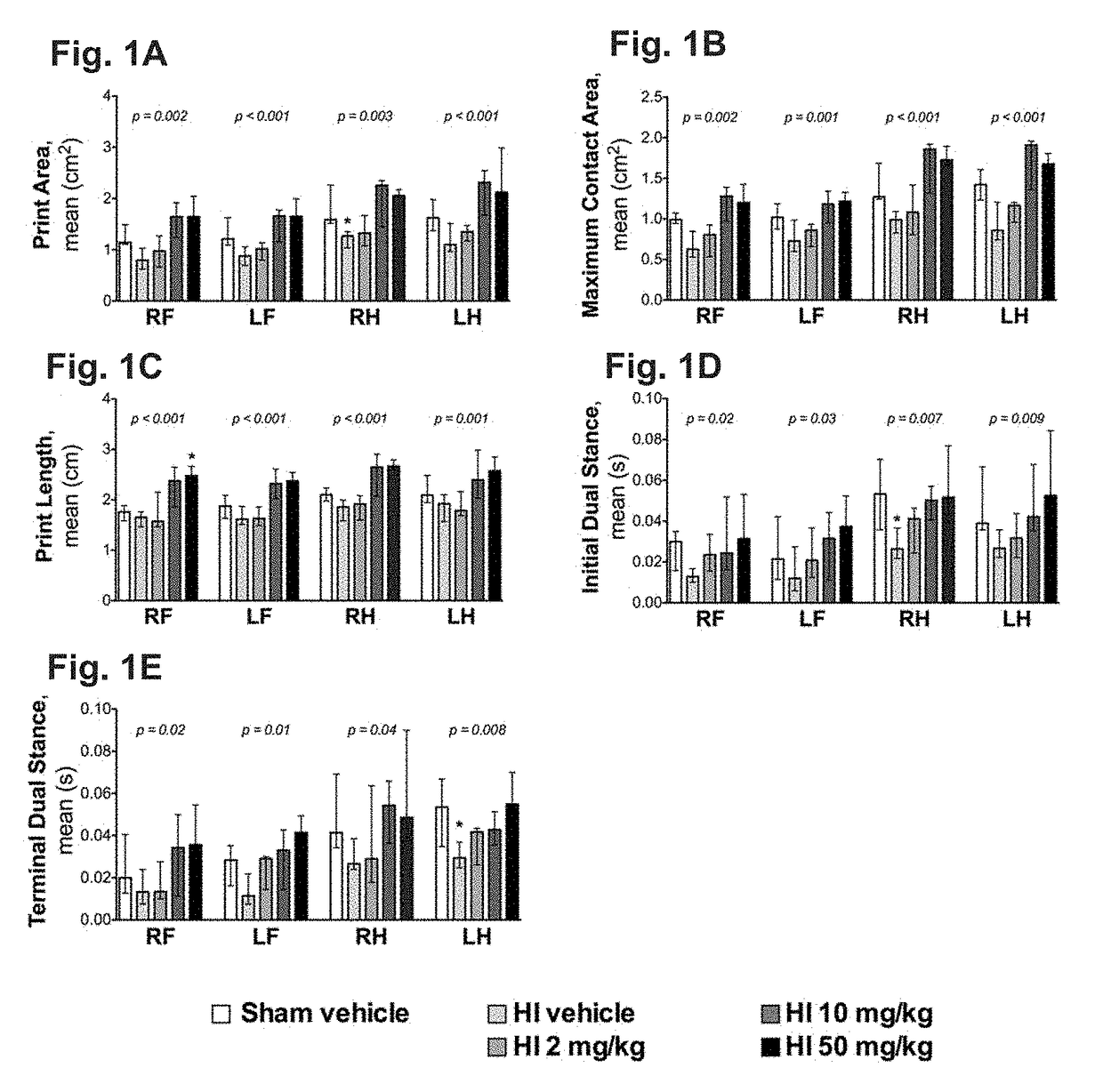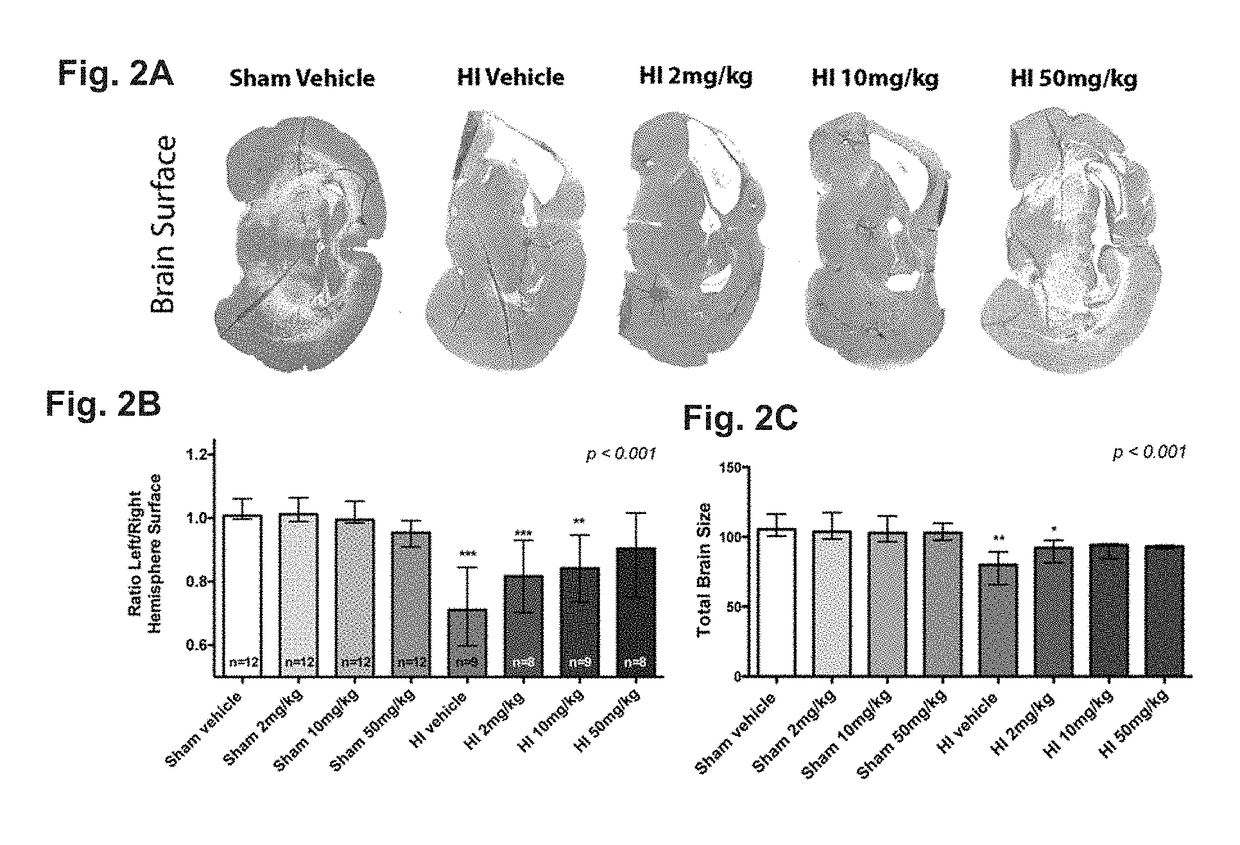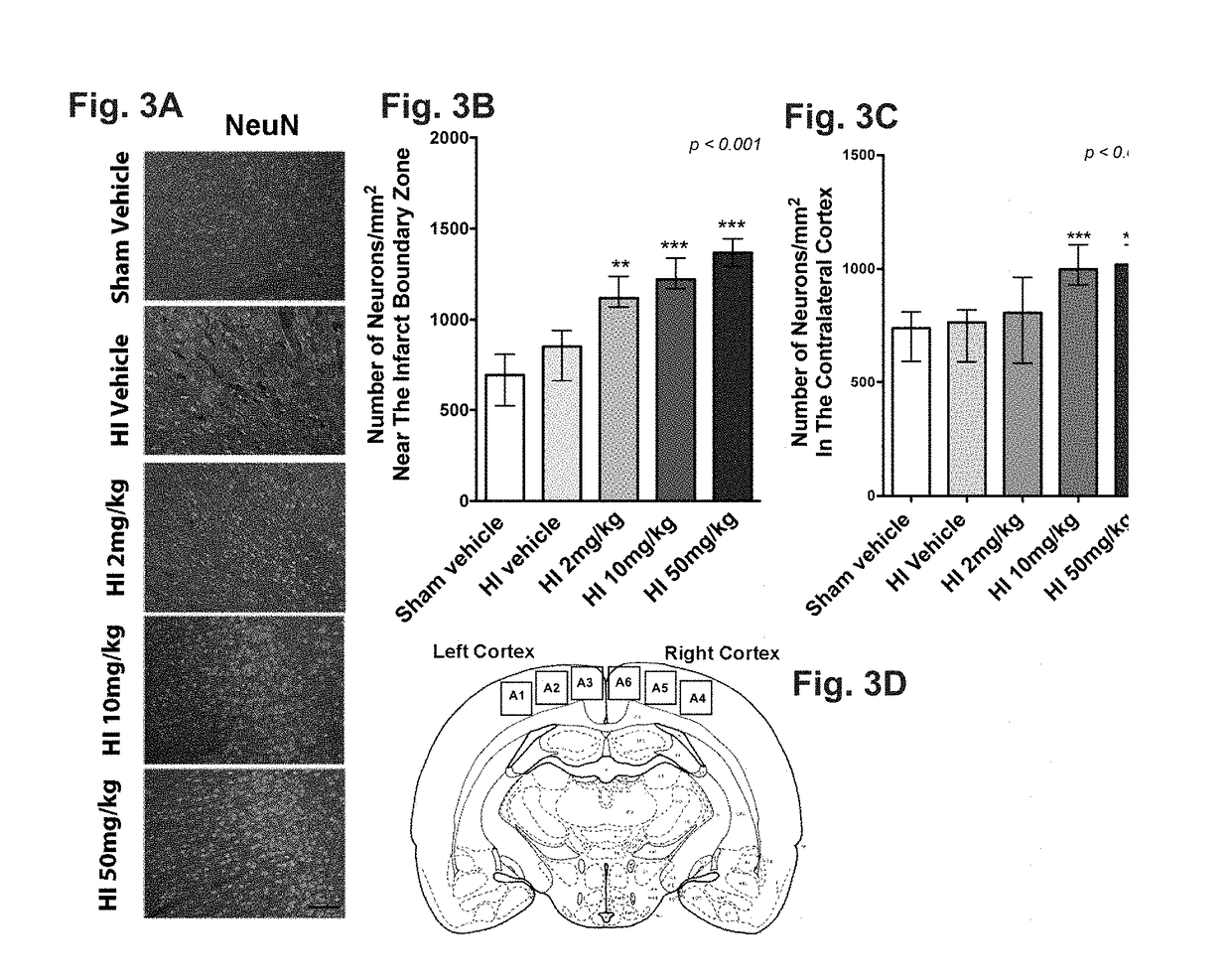Phosphodiesterase inhibitors to repair brain and/or retinal injury in human newborns
a technology of phosphodiesterase inhibitors and human newborns, which is applied in the direction of nervous disorders, pharmaceutical delivery mechanisms, organic active ingredients, etc., can solve the problems of brain and retinal injuries, significant mortality and long-term morbidity, and birth asphyxia in newborns remains a serious problem
- Summary
- Abstract
- Description
- Claims
- Application Information
AI Technical Summary
Benefits of technology
Problems solved by technology
Method used
Image
Examples
example
Example 1
Use of Sildenafil to Improves Brain Injury Recovery
1.1 Animals
[0049]The experiments were conducted in accordance with the standard operating procedures for the use of animals in research as per the guidelines in the Canadian Council on Animal Care's Guide to the Care and Use of Experimental Animals, and in the Animals for Research Act. These experiments were approved by the local Animal Care Committee from the Montreal Children's Hospital, McGill University Health Centre. Adult female Long-Evans rats with their male-only litters (Harlan Laboratories) were received in the animal facility, housed under standard environment, and allowed food and water ad libitum. Rat pups remained with their mother until weaning at postnatal day 21 (P21). Rats were monitored daily by animal facility health care technicians, and additionally by the researchers during the course of the study.
1.2 Induction of Term Neonatal Hypoxic-Ischemic Encephalopathy (HIE)
[0050]A well-established Vannucci rat...
example 2
Use of Sildenafil to Improves Functional and Structural Outcome of Retinal Injury Following Term Neonatal Hypoxia-Ischemia
2.1 Animals
[0101]All experiments were conducted in accordance with the Association for Research in Vision and Ophthalmology Statement for the use of animals in ophthalmic and vision research, and were approved by the local animal care committee. Adult female Long-Evans rats with their male-only litters (Harlan Laboratories) were received, housed under standard environment, and allowed food and water ad libitum. Rat pups remained with their mother until weaning at postnatal day 21 (P21).
2.2 Induction of Term Neonatal Hypoxic-Ischemic Encephalopathy (HIE)
[0102]A well-established rat model of term neonatal HIE (Vannucci model) (Patel S D et al., 2014, Patel S D et al., 2015; Recker R et al., 2009; Rice J E, 3rd et al., 1981) combining a left common carotid artery ligation and a 2-hour exposure to 8% oxygen, was used with 10-day-old rat pups as previously described (...
example 3
Use of Sildenafil to Repair Retinopathy of Prematurity after Exposure to Hyperoxia
[0131]The therapeutic effect of sildenafil on retinal function and structure in a rat model of ROP was investigated.
3.1 Method
[0132]Sprague-Dawley rats were exposed to hyperoxia (i.e., 80% oxygen) interrupted by three 0.5-hour periods of normoxia (i.e., 21% oxygen) per day or room air only (i.e., 21% oxygen) from post-natal day 4 (P4) to 14 (P14). Pups were then housed in room air. Sildenafil (50 mg / kg) or vehicle was given per os twice daily after oxygen exposure (from P15 to P21). Flash electroretinograms were recorded at P29 to assess the retinal function. At P31, retinas were extracted, sectioned and stained with toluidine blue to measure the thicknesses of the different retinal layers.
3.2 Results (Data Not Shown)
[0133]Hyperoxia caused a reduction in the scotopic and photopic b-wave amplitudes (p<0.05) and in thickness of the outer plexiform layer (OPL). Compared to the rat pups exposed to room air...
PUM
| Property | Measurement | Unit |
|---|---|---|
| Dimensionless property | aaaaa | aaaaa |
| Dimensionless property | aaaaa | aaaaa |
| Time | aaaaa | aaaaa |
Abstract
Description
Claims
Application Information
 Login to View More
Login to View More - R&D
- Intellectual Property
- Life Sciences
- Materials
- Tech Scout
- Unparalleled Data Quality
- Higher Quality Content
- 60% Fewer Hallucinations
Browse by: Latest US Patents, China's latest patents, Technical Efficacy Thesaurus, Application Domain, Technology Topic, Popular Technical Reports.
© 2025 PatSnap. All rights reserved.Legal|Privacy policy|Modern Slavery Act Transparency Statement|Sitemap|About US| Contact US: help@patsnap.com



